* (restored)

A board game is a game in which counters or pieces are placed on, removed from, or moved across a “board” (a premarked surface usually specific to that game). As in other forms of entertainment, board games can represent nearly any subject.
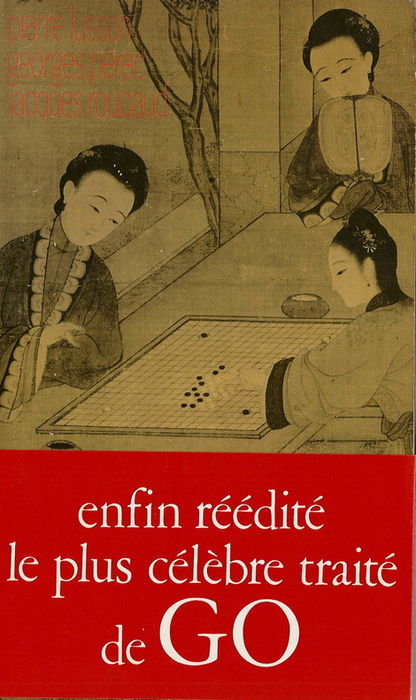 Jacques Roubaud is a poet, mathematician, novelist, and member of the Oulipo since 1966. In his book ɛ (1967) he structured a poem-sequence according to the rules of the Japanese board-game GO, which he helped introduce into France. In that book, each poem participates in three separate, intertwining sets of poetic sequences distinctly determined (1) by their representation of moves in an actual game of GO, (2) by their place in an abstract figure, or constellation of poems, and (3) by their place in a ‘paragraph’ of poems organized according to a pseudo-mathematical justification. Two examples:
Jacques Roubaud is a poet, mathematician, novelist, and member of the Oulipo since 1966. In his book ɛ (1967) he structured a poem-sequence according to the rules of the Japanese board-game GO, which he helped introduce into France. In that book, each poem participates in three separate, intertwining sets of poetic sequences distinctly determined (1) by their representation of moves in an actual game of GO, (2) by their place in an abstract figure, or constellation of poems, and (3) by their place in a ‘paragraph’ of poems organized according to a pseudo-mathematical justification. Two examples:
I belong to the finger that strikes the la to the flow to the coat to the honey plate to the moccasin to bumblebee fur I belong to the blue seer at the window
I belong to everything not to fire yesterday nor to the nail tomorrow to everything simultaneously I have this power that is not what I can nor what I am I belong
how was I saying there are cinders that I am not wheels I have not turned squares where I have not been an angle
how was I saying there are eyes through which I have not seen without me masses have thrown themselves upon the rocks without me truths have come to the end of their chain.
I dream that you smile
that we speak at my door
of books you have read
of the weather as you please
it’s nighttime in Paris
then it rains in our wine
I dream a wet garden
then we walk the streets
like coming home from school
steps ahead of our dog
adieu adieu age of games
the age of winds has gone
and everything could be better
everything could be different
I awake among the cries
a madman in derision
calling Marie Marie
and me I am in this black
and I know you are dead
and no one awaits you
______________
____________
I enjoy explaining game rules, and I always introduce the game by first describing the game concept. Every rule has a role in supporting the game concept. If players can wrap the whole idea of the game around their heads, then all the individual rules ought make sense. Players can sit down and get to work at trying to win. If they can’t get the game concept, then most likely you’ll see the “deer in the headlights” look. “Okay, you explained the game to me but… what am I supposed to do?”
A game, at its best, is more than a bunch of mechanisms. It is a coherent system of mechanisms with a theme of its own. Let’s call this theme that summarizes the system of mechanisms the game concept. There is nothing to prevent a game built from a bunch of connected mechanisms from being lots of fun, but I think that having a strong game concept takes the game up a level. It helps to focus the players’ goals. It adds meaning to the game apart from the theme. It defines the game.
 Stefan Feld’s Notre Dame: Players play as well-off Parisians in the 15th century who wish to improve the importance and appearance of the city quarter around the famous Notre Dame cathedral. The primary game concept is original but simple card play players use to permanently improve their influence in the quarter. However, turn after turn, round after round, players must make choices that can have major implications. If one does one thing, then the other can’t be done. Concentrating on one aspect means automatically ignoring another, which, above all others, is particularly dangerous in the case of the gradually approaching plague….
Stefan Feld’s Notre Dame: Players play as well-off Parisians in the 15th century who wish to improve the importance and appearance of the city quarter around the famous Notre Dame cathedral. The primary game concept is original but simple card play players use to permanently improve their influence in the quarter. However, turn after turn, round after round, players must make choices that can have major implications. If one does one thing, then the other can’t be done. Concentrating on one aspect means automatically ignoring another, which, above all others, is particularly dangerous in the case of the gradually approaching plague….
Players choose among a series of actions which help them to score points, gain resources, or avoid catastrophes. The more you are able to take the same action during the game, the more valuable it becomes. The trick is that in each turn, a player is presented with three possible actions, and he must decide which one to play, and which ones to make available to the players to his left.
 Cyril Demaegd’s Amyitis: On any given turn, a player will take one of five different actions. The Merchant and Peasant each give you distinct types of resources. The Engineer gives you immediate points and a shot at a majority battle, for more points, on the main part of the board. The Priest lets you take part in a different majority battle in a small part of the board, which help you win more points or resources depending on where you choose to play. Finally you may move the caravan – in which you spend the resources you earned elsewhere to earn: points from cards, income, faster caravan movement, or the ability to earn points on the main board, which in turn is limited by choices made by players who chose the Engineer earlier in the game.
Cyril Demaegd’s Amyitis: On any given turn, a player will take one of five different actions. The Merchant and Peasant each give you distinct types of resources. The Engineer gives you immediate points and a shot at a majority battle, for more points, on the main part of the board. The Priest lets you take part in a different majority battle in a small part of the board, which help you win more points or resources depending on where you choose to play. Finally you may move the caravan – in which you spend the resources you earned elsewhere to earn: points from cards, income, faster caravan movement, or the ability to earn points on the main board, which in turn is limited by choices made by players who chose the Engineer earlier in the game.
So the game Amyitis is about… I’m not sure. Cyril Demaegd described it as having a “star structure” rather than a “line structure”. I think I understand his point. Some games, ones with a linear structure, have their elements lined up like dominoes. The first one effects the next one, and so on down, until the last mechanism which affects the victory conditions. There are some very clever mechanisms in the game, and notwithstanding the nightmare “star structure”, the interrelationships play well. However, playing Amyitis is a little like playing with sand. It can be lots of fun, but there is nothing to hold on to.
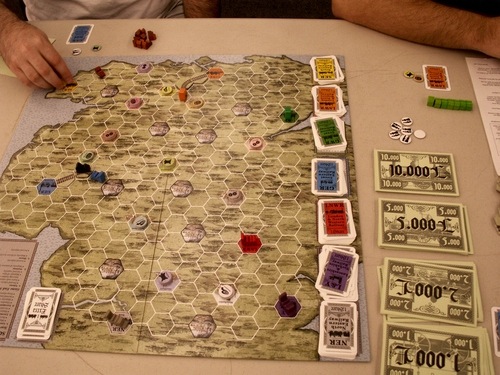 Reiner Knizia’s Stephensons Rocket: Knizia expands his fleet of tile laying games with this game about colliding railroads in early 1800’s England. There are seven different rail companies that players can expand. Each time you extend a rail, the other stockholders can veto your action, but it might cost them their shares. When two companies’ rail touch, the railways merge to become one. The game is over when only one company remains or there are no rail tiles remaining, and the winner is the player who earned the most money over the course of the game.
Reiner Knizia’s Stephensons Rocket: Knizia expands his fleet of tile laying games with this game about colliding railroads in early 1800’s England. There are seven different rail companies that players can expand. Each time you extend a rail, the other stockholders can veto your action, but it might cost them their shares. When two companies’ rail touch, the railways merge to become one. The game is over when only one company remains or there are no rail tiles remaining, and the winner is the player who earned the most money over the course of the game.
A game can seem more complicated than it is when its game concept is weak. In a public appearance, Reiner Knizia once said that scoring and victory conditions are good things to manipulate to get the players to do what you want. In the case of Stephensons Rocket, he took his own advice too well. He made the game work by tinkering with the scoring mechanisms at the cost of maintaining a strong game concept. The final product is a good game, but at times it seems to be a runaway train that is in constant danger of running off its rails.
 Andreas Seyfarth’s Puerto Rico: The players are plantation owners in Puerto Rico in the days when ships had sails. Growing up to five different kind of crops: Corn, Indigo, Coffee, Sugar and Tobacco, they must try to run their business more efficiently than their close competitors; growing crops and storing them efficiently, developing San Juan with useful buildings, deploying their colonists to best effect, selling crops at the right time, and most importantly, shipping their goods back to Europe for maximum benefit.
Andreas Seyfarth’s Puerto Rico: The players are plantation owners in Puerto Rico in the days when ships had sails. Growing up to five different kind of crops: Corn, Indigo, Coffee, Sugar and Tobacco, they must try to run their business more efficiently than their close competitors; growing crops and storing them efficiently, developing San Juan with useful buildings, deploying their colonists to best effect, selling crops at the right time, and most importantly, shipping their goods back to Europe for maximum benefit.
“Puerto Rico” by Andreas Seyfarth may be the great enigma when it comes to the notion of game concept. There are many facets to the mechanics. Each one is essential and none seems to dominate. Is the game about the role selection? The selection of roles is a central and original concept. Puerto Rico is relatively complex for a Eurogame, and it cannot be summarized by a simple game concept. Games such as Puerto Rico cannot readily be understood in terms of their component mechanisms nor summarized by a central mechanism that drives all others. The cogs of each mechanism are too tightly meshed. The game concept is the total effect. The challenge is to create a structure that is complex enough to satisfy the designer’s ambitions, but simple enough to be comprehensible. Anyone who has taught Puerto Rico to a newbie knows that even the simple structure pictured above starts to push the limits of comprehensibility for most people.
 Karl-Heinz Schmiel’s Die Macher: “Die Macher” holds together remarkably well despite being one of the most baroque of all German games. It takes about 45 minutes to teach the rules for Die Macher, and each turn has 13 phases. I don’t think too many players would tolerate that sort of complexity if its mechanisms didn’t tie so well to its election theme. When a theme is strong, the theme merges with the game concept. “Players represent political parties, each trying to get as many votes in regional elections as possible, which earns you points. You’ll attempt to manipulate your party’s policies and public opinion in order to get votes in those regional elections. Success in those elections in turn enables you to control the national agenda, which scores you more points.”
Karl-Heinz Schmiel’s Die Macher: “Die Macher” holds together remarkably well despite being one of the most baroque of all German games. It takes about 45 minutes to teach the rules for Die Macher, and each turn has 13 phases. I don’t think too many players would tolerate that sort of complexity if its mechanisms didn’t tie so well to its election theme. When a theme is strong, the theme merges with the game concept. “Players represent political parties, each trying to get as many votes in regional elections as possible, which earns you points. You’ll attempt to manipulate your party’s policies and public opinion in order to get votes in those regional elections. Success in those elections in turn enables you to control the national agenda, which scores you more points.”
Die Macher benefits from both a strong theme and a reasonably central mechanism to maintain some conceptual unity. As games move along the spectrum from “Eurogame” to to “Simulation”, the mechanics tend to blossom around the need to recreate reality rather than to maintain any conceptual unity. For many of the best games like Die Macher – including ones with strong themes – a game is about its game concept. The game concept may be a strong central mechanism that the others all relate to. Whatever it is, it brings the entire system together so that the player knows just what… the game is about. Without a game concept, what’s inside the box can still be fun, but it may just be six mechanics in search of a game.
____________
‘The Grape Escape’ (0:30)
‘Dizzy Dizzy Dinosaur’ (0:30)
‘Crossfire’ (0:30)
‘Hungry Hungry Hippos’ (0:15)
‘Perfection’ (0:30)
‘Don’t Wake Daddy’ (0:14)
‘Splat’ (0:30)
‘Mall Madness’ (0:15)
‘Ludo’ (0:30)
‘Jurassic Park’ (0:19)
____________
 The French iconoclast Guy Debord tends to be known in America—if he is known at all—for two things, both of which peaked in the student movements of 1968, when he was thirty-six. Debord was a founder of the Situationist International, an underground organization whose roots lay in Dada and cultural Marxism and whose whimsical slogans, creative defiance, and cryptic prose attracted dreamers on both sides of the pond. He was also a curmudgeon. His 1967 book, The Society of the Spectacle (the other thing he’s known for), was the high point in a lifetime of faultfinding, paranoia, and alienation …
The French iconoclast Guy Debord tends to be known in America—if he is known at all—for two things, both of which peaked in the student movements of 1968, when he was thirty-six. Debord was a founder of the Situationist International, an underground organization whose roots lay in Dada and cultural Marxism and whose whimsical slogans, creative defiance, and cryptic prose attracted dreamers on both sides of the pond. He was also a curmudgeon. His 1967 book, The Society of the Spectacle (the other thing he’s known for), was the high point in a lifetime of faultfinding, paranoia, and alienation …
Still, he thought his legacy would rest on something else. “I succeeded, a long time ago, in presenting the basics of [war] on a rather simple board game,” he wrote in 1989. “The surprises of this kriegspiel seem inexhaustible; and I fear that this may well be the only one of my works that anyone will dare acknowledge as having some value.” Debord invented the Game of War, as he called it, in his early twenties—he had no military background—and patented it ten years later. The version that finally reached market in 1987, after more than two decades, included blow-by-blow commentary on a match between Debord and his wife, Alice Becker-Ho. (read the entirety)
____________
Like Fantastic Fest and, recently, GenCon, BGG is an annual Dallas-based convention focusing exclusively on board games. Twenty-five major board game vendors participate to show and debut the latest and greatest in new games and gaming products. The Flea Market is a 30-45 minute event where participants can sell off their new or used games in a flea market style. Special guests include Jason Matthews of 1960: The Making of the President fame and Tom Lehmann, creator of Race for the Galaxy.
BGG.con tour
‘Agricola’ at BGG.con
Library at BGG.con
‘Heroscape’ at BGG.con
‘Pitchcar’ at BGG.con
The flea market at BGG.con
____________
‘Chess is the touchstone of intellect.’
— Johann Wolfgang von Goethe
‘Chess is as elaborate a waste of human intelligence as you could find anywhere outside an advertising agency.’
— Raymond Chandler
‘Chess is a fathead and feudal game.’
— Georges Perec
‘Chess is as much a mystery as women.’
— James Purdy
‘Life is too short for chess.’
— Byron
‘The chess-board is the world, the pieces are the phenomena of the Universe, the rules of the game are what we call the laws of Nature. The player on the other side is hidden from us.’
— Aldous Huxley
‘Chess is mental torture.’
— Thomas Bernhard
‘I am still a victim of chess. It has all the beauty of art – and much more. It cannot be commercialized. Chess is much purer than art in its social position.’
— Marcel Duchamp
‘I feel as if I were a piece in a game of chess, when my opponent says of it: That piece cannot be moved.’
— Soren Kierkegaard
‘You sit at the board and suddenly your heart leaps. Your hand trembles to pick up the piece and move it. But what chess teaches you is that you must sit there calmly and think about whether it’s really a good idea and whether there are other, better ideas.’
— Stanley Kubrick
_____________
____________
Game art functions on many levels – information design which is clarity and comprehension, aesthetic needs which provides attraction and ambience, thematic needs which enhances the story and finally a branded “look” which provides a unique, iconic look for a branded property (not “samey” looking). It is easy for many to say that none is more important than information design or that information design should never sacrifice for other needs. In reality, the addition of thematic details and aesthetic needs will always lead to a reduction in information design as the more the eye needs to take in, the more difficult it will be to take in a game situation. It is a balance that is sought after. One can certainly find a very “functional” game in terms of user friendliness. But if it does not look good, something big is missing. Cheapass games fall into this category. While many of them might work from a clarity point of view, who really is seduced in to playing them? The art in such games remains relatively non functional despite any user friendliness.
I have often heard it said of game board art, “The game art needs to be functional, not a painting to hang on the wall.” This seems a very nonsensical statement to me. Art for walls serves to enhance the ambience of a room. By the same token, the art on the game board provides an ambience to the gameplay that very pure data will never drive. I maintain that you are more likely to spend time looking at your favorite games than the art on your walls. Thus, the game aesthetics are just as important as wall decoration aesthetics for setting a mood and ambiance. How often have we stared at the wall art for 60 minutes or two hours at a time? Now how about the game art? (read the entirety)

‘Sure, Cheapass’ Kill Dr Lucky may be “functional” in terms of user friendliness, but what does it matter when it looks terrible. The art has done nothing to lure me in and give me confidence that this game is going to work beyond some homemade concoction. Someone will have to work hard to convince me to play the game. …And they did. This as opposed to the look of the game doing the selling and creating the desire from within me to really want to play. Just because it reads does not make it good art.’

‘A more recent implementation of Kill Dr Lucky. The read has taken a hit here from the previous version. However, unlike the original, I would be initially interested in playing it, were someone else interested. Compared to the original this actually looks fun wheras the old one did not. I’ve not seen this production in person though, or played the original in years, so I do not know if the board is very readable. It could have readability problems which would be an issue. The only point I make here is that art now functions to generate appeal and consequent interest as well as confidence that this will be more than a prototype.’
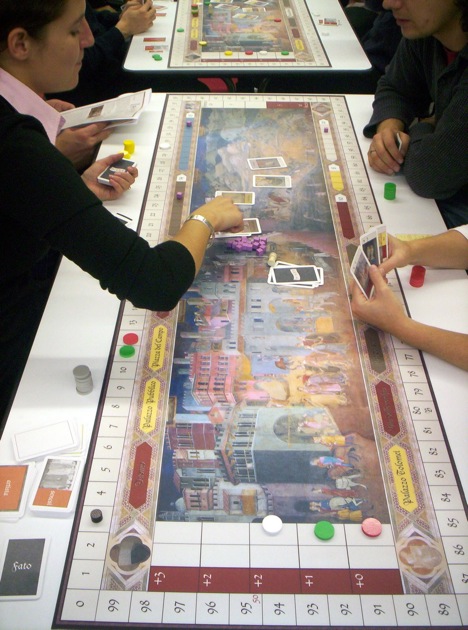
‘A game called Siena. Here, we have a pretty board with nearly no functionality in terms of usability. My hunch with this was that the authors had very pretty art (an old medieval fresco) that they were afraid to “blemish” with graphic detailing. Consequently, the game has legendary difficulty in playability. ‘

‘The artwork seduced me. I bought it and played a few times hoping it would get better. The artwork fuctioned both to seduce me and to give me confidence in its performance. Here, the success and function of the artwork had nothing to do with ease of play, but of aesthetics.’

‘Cards and board from Through the Ages. They work pretty well from an information design function (though the board has a little problem with the notations). However, from an aesthetic point of view the game really suffers. The amaturish, homemade quality of the art has a prototype feel to it. It lacks the richness and drama that the game actually yields. Were it not for the high praise and ratings that the game has recieved, I might have passed on it. Boy, am I sure glad I didn’t though as, for me, this is a great game.’

‘Taluva – a pure abstract infused with theme by virtue of art and bits. I can feel and even believe that there is some primitive island life in the works here.’

‘Another abstract game here – Santiago. Unlike Taluva, I don’t get a sense of time or place (other than a farm). The art really does not much support theme. It looks very dry, abstract and boring. This also falls under a failure in aesthetic application as it does not look nice or compelling. Consequently, I’m less likely to pick this game up and more likely to get bored of it as soon as gameplay shows wear. Sure it reads, but so would a hand drawn black and white pencil sketch. I wouldn’t be interested in playing that either. Just because something reads does not make it good art.’
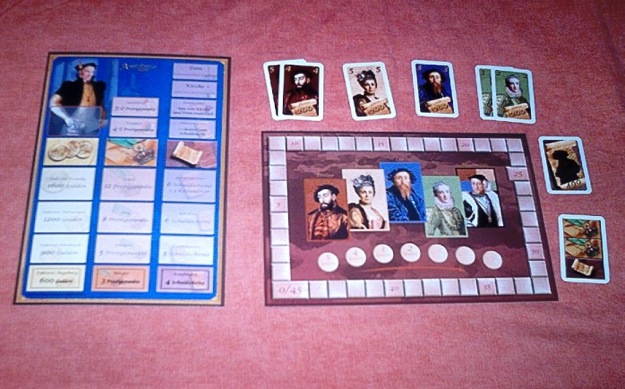
‘Everything reads pretty good in Augsburg 1510. But there’s nothing special going on here. When I played it with my group it came up a number of times… “what do you think of the art?” someone asked. Another said… “well it reads fine…” All the while there was a reflective silence and a shrug of shoulders. It’s just that there was nothing of interest here. It’s sort of a “been there, done that look”.’
______________
‘Kentucky Fried Movie: Scot Free’, excerpt
‘Battleship’, trailer
‘Scrabylon’, excerpt

‘Chińska rodzinna gra planszowa’, excerpt
‘Dungeons and Dragons’, trailer
‘Word Wars: Tiles and Tribulations on the Scrabble Circuit’, trailer
‘Clue’, excerpt
‘Zathura’, trailer
‘Uber Goober: A Film about Gamers’, trailer
‘Star Wars: Interactive Board Game’, excerpt
‘Candy Land: The Great Lollipop Adventure’
‘Oujia: The Movie’, trailer
______________
 In Modern Art, players compete to gain the most money by buying and selling paintings at auctions and reselling them for profit. The game consists of four rounds–in each, works by up to five Artists will be offered for sale, and auctioned off in various ways. Players take on the roles of art dealers / collectors. It is their decision which artworks to sell, and how to sell them. So, successful players must balance two aims, firstly collecting the best artworks for their own collections, forwarding the careers of those artists from whom they have most to gain–and at the same time, raising as much money as possible by successfully auctioning off those works that don’t fit their own strategy, and picking up their own fancies as cheaply as possible.
In Modern Art, players compete to gain the most money by buying and selling paintings at auctions and reselling them for profit. The game consists of four rounds–in each, works by up to five Artists will be offered for sale, and auctioned off in various ways. Players take on the roles of art dealers / collectors. It is their decision which artworks to sell, and how to sell them. So, successful players must balance two aims, firstly collecting the best artworks for their own collections, forwarding the careers of those artists from whom they have most to gain–and at the same time, raising as much money as possible by successfully auctioning off those works that don’t fit their own strategy, and picking up their own fancies as cheaply as possible.
All players take turns running the auctions, which come in many different styles. Whoever offers the top bid owns the painting and sells it at the end of the round. The price the painting fetches is based on the popularity of the artist and how well his paintings have sold in the past. The player with the most money at the end of four rounds of buying and selling wins. These Art Dealers dream of fame and riches, but dreams can vanish in an instant, leaving the player with a gallery full of last year’s art, unwanted and valueless. Only those with a nose for tomorrow’s tastes today will rise to the top of the Art world!
Modern Art creator/designer Reiner Knizia is a full-time game designer born in Germany in 1957 and now living in England. He earned a doctoral degree in Mathematics and found work in the banking industry. His first published games in 1990 were Gold Digger and Digging. Since then he has been one of the world’s most prolific game designers with over 200 games to his credit. He is particularly notable for his auction trilogy and his tile-laying trilogy.
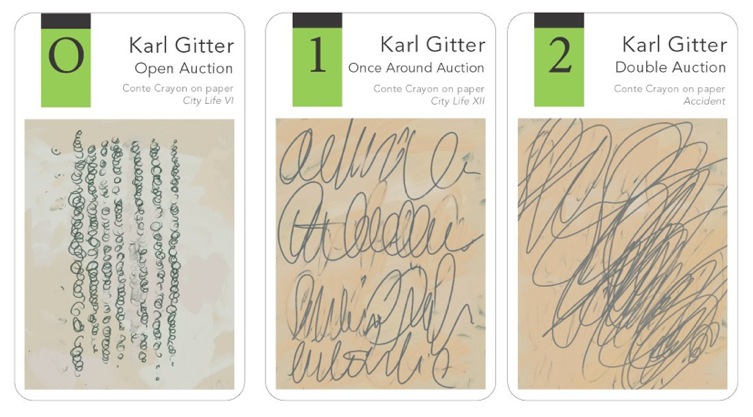
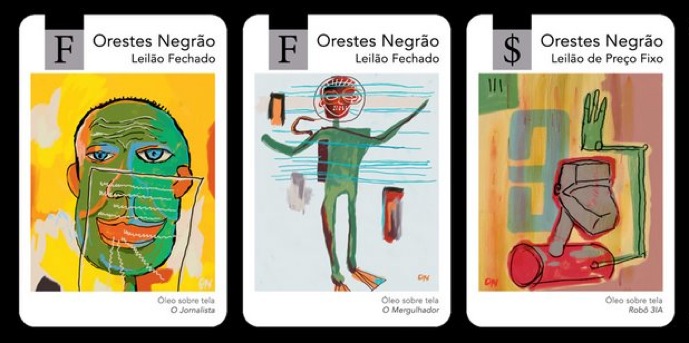


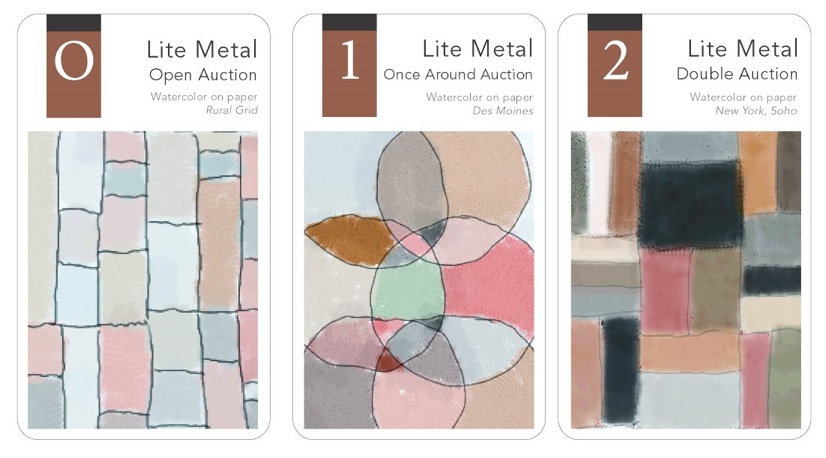
______________

*
p.s. Hey. ** Charalampos Tzanakis, Oh, hello there. Welcome! I think Efteling is an “all day” park. It’s quite large, and almost everything in it is worth doing or seeing. I really am going to have to join Instagram one of these soon days. Although I do think it’s really annoying that they don’t allow visitors to look at it. Cool about Expat 5. I’ll wait for it. My favorite Ivy Compton-Burnett is ‘The Present and the Past’. She’s always great though. I haven’t read ‘More Women than Men’. Love to you and your doggie down there. ** Tea, There’ll always be a healthy market for “pure” and “wholesome” “queer” love stories, for better or worse, ha ha. I suppose I’m not a great judge of such things, but looking at weird porn together sounds awfully healthy. I’m also of the opinion that intensely homoerotic friendships can constitute true love. In any case, I hope it pans out, but, if it doesn’t, speaking as the veteran of many non-panned out relationships, you’ll be not only okay but richer, trust me. ** Dominik, Hey!!! Thanks, yeah, just hoping our film isn’t a little too odd for them. Not sure what their tastes in film is like, but we’ll find out. Photos, yes, please! My jet lag is just slightly worse today. That happens. I expect about five days or a week of sleeping struggles. Pretty normal. I’m glad love mouthed those two sentences because I was very fond of them. Actually, your two favorites are mine too. Like minds! Love mistaking WokeBlond’s butt for a board game to WokeBlond’s surprise and delight, G. ** Jamie, Hey, hey, Jamie! I’m all right, unpleasantly lagged, but it’ll pass if logic is to be trusted. Our producer on the ground in LA is reaching out to the makers of some of our favorite haunts to see what they’re doing with their leftover decor and offering to take good care of it for a while. Fingers crossed. Oh, no, you got the Covid. I’m starting to feel like something’s wrong with me that I still haven’t had it. Glad it’s in your past. What do I know, but I have a pretty strong feeling that your novella is good at the very, very least. Forge! Oh, hm, it’s hard to imagine Alex James without his upper class snootiness, but, yeah, otherwise I can see that. I haven’t seen ‘La Coquille et le Clergyman’, but I do like Dulac’s films, so it seems like a good bet. Did you see it? I have this ongoing Zoom book/film club thing I do with US friends, and our assigned film this week is Herzog’s ‘Happy People’, so that’s my next cinematic foray. Know it? Love with drooping eyelids, me. ** _Black_Acrylic, Escorts with a sense of style are always one step ahead. No big on your not yet finishing ‘Mill …’. I’d probably still be stuck in Chapter 3. Yeah, of course, get to know your flat like the back of your hand first and foremost. ** Bill, Hi. Either Spiderboy is a flop or his suitors are the strong silent types. Ah, the trio, right. With video component? Ooh, something new? ** Steve Erickson, Yeah, ‘Whole Lotta Red’ is so sharp, right? I was very excited by it. I’ve heard a little of yeat and Yung Kayo and didn’t like them as much, but I need to give them both proper listens. Mm, maybe your kitchen racket would make a good field recording? I can’t say that the haunts we visited really changed our ideas, but there were some effects and stagey stuff that was new and that we might swipe. ** malcolm, Thanks. I like ’em too, obviously. They’re actually rather time consuming to put together, so I guess I must. Thank you so much about our films! That’s awesome, and it’s always the coolest to be mutual admirers, so … whoop! Arthur: He was friends of a bunch of my friends, so I met him through them. A couple of my friends were in one or more of his bands. He was always walking around the East Village with headphones on looking spaced out, so I ran into him on the street a lot and talked with him then. He was very shy and introverted and kind of emotionally very distant, but friendly, I guess I would say. Def. use that title/blurb. And if people know the actual festival, they should be pretty impressed. Happy that you and Alexander are aligned on the script. A great collaborator is the rarest and the best. Say hi and belated congratulations to him for me. I saw your email. Thank you! I’ll read the script as soon as I’m firing on all cylinders again. Hope your Wednesday is a wowzer. ** Robert, There’s always a pretty decent chance that the guys aren’t real. Or not completely real. That’s the spirit: about the starting over from scratch on your first pages. After I finished my first novel ‘Closer’, I realised the first chapter was completely wrong, and I did the same thing, and I guess it worked out okay. I usually try to see ‘reality’ as something to be employed to attract and connect with the reader. So it’s about putting in just enough of that to usher the reader into what you really want to do. I usually don’t prioritise it any more than that. I guess I also think that if you believe enough in what you’re writing about it won’t be corny or overly intentional. It is a tricky balance to find — the essence vs. its pleasurable communication — but, you know, it’s just a trial and error thing, I think? ** Gick, Hi. Nice name. Oops, sorry you didn’t win whatever, but fuck them. I never win anything or even get nominated for any prizes, if that helps. C’est la … And, eek, about the cyst. I’m so sorry. Ouch. Or hopefully not ouch. It’s, like, treatable and everything, yes? Your new book! I can wait to read it. Wow. What feels like feeling lost will feel like a necessary rebuilding phase later. Or that’s how it works for me. I’m just not interested in aggression and egotism and control freakdom and the language and presentation that goes with them at all. So I guess, yes, I greatly prefer the submissive/passive voices, and apparently the looks of them too. Thanks for the kisses. Take some right back via moi. ** Okay. For some reason I decided to restore this old post about board games. Hence, it. See you tomorrow.




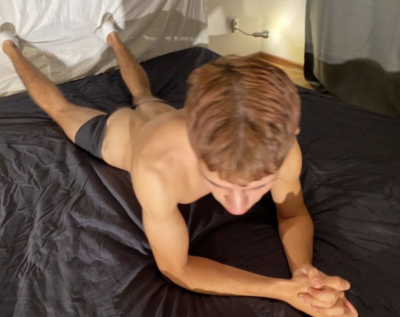
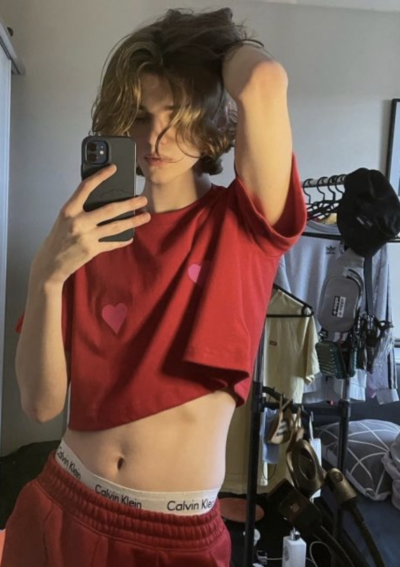
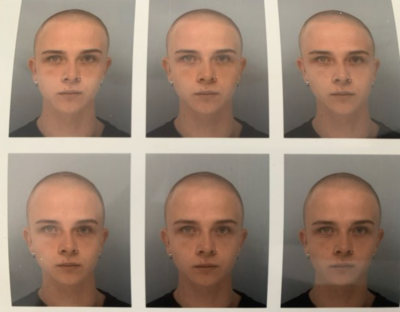
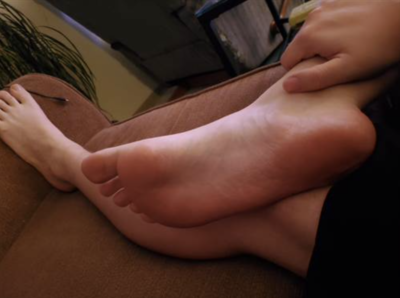

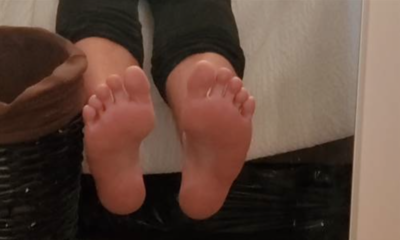

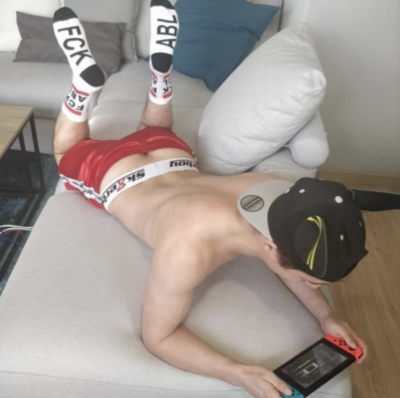

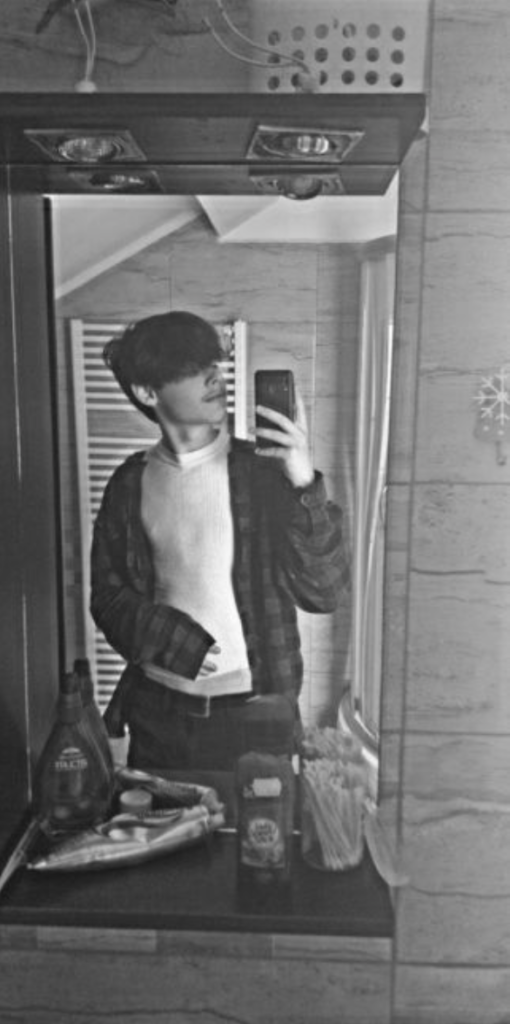

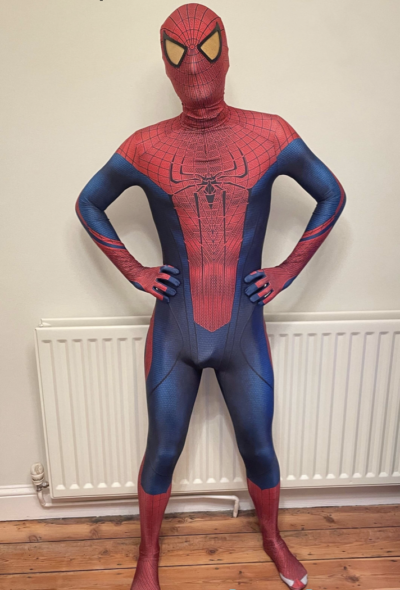
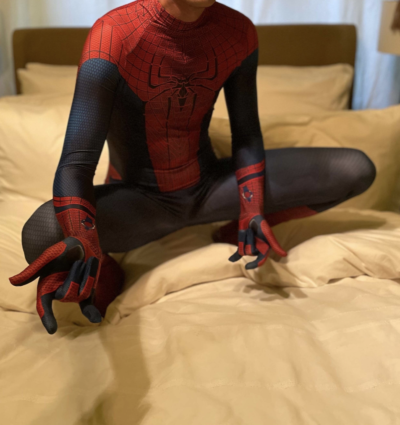


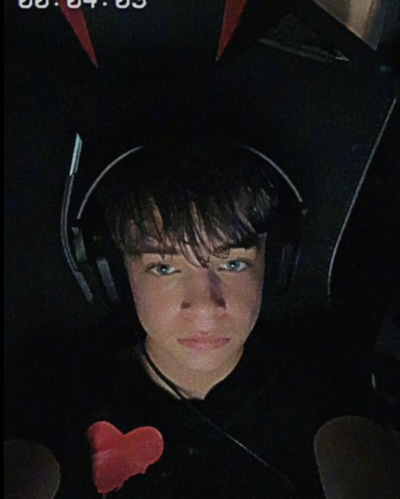


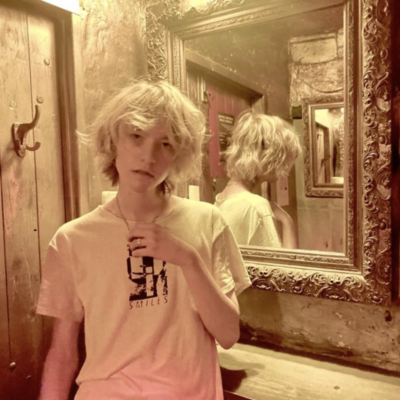
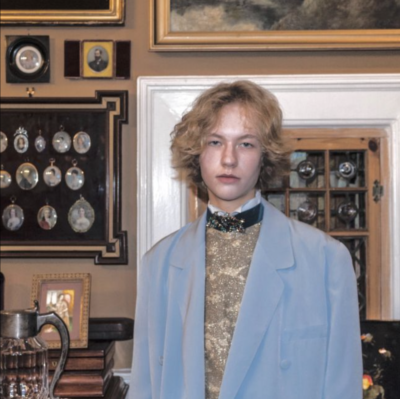
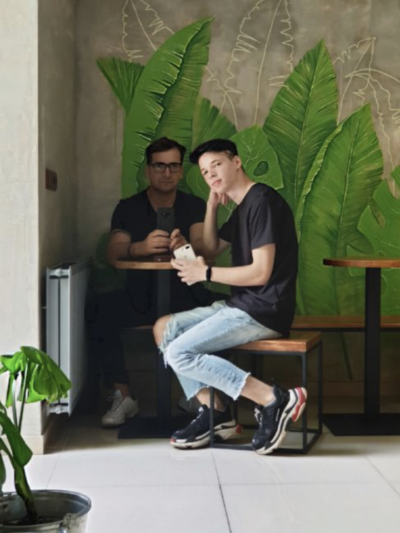




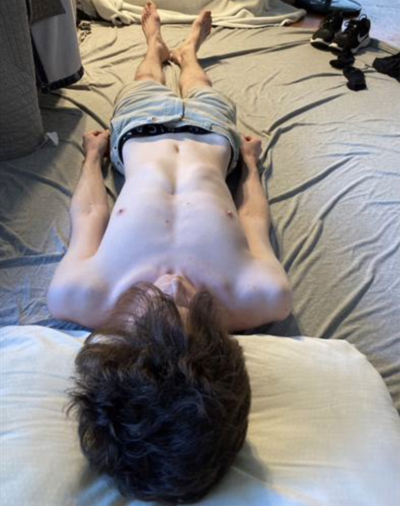




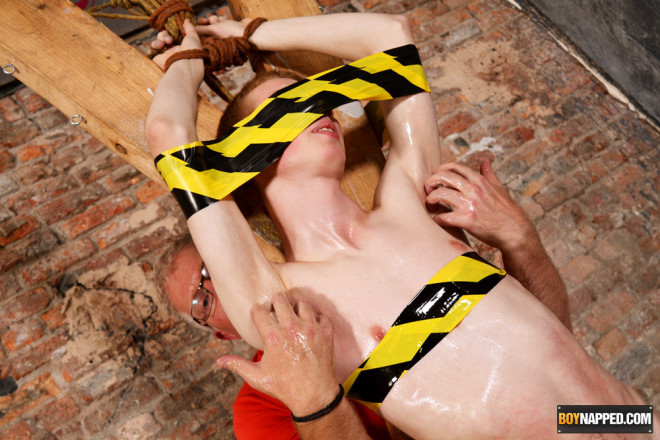
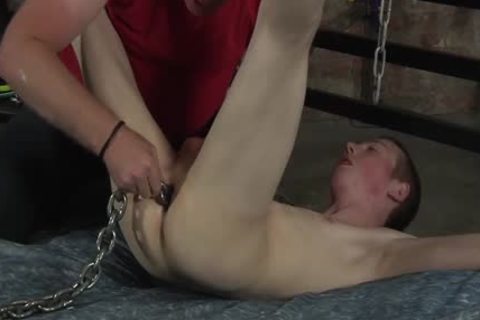



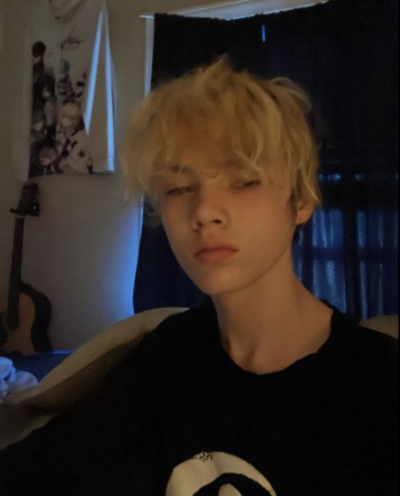

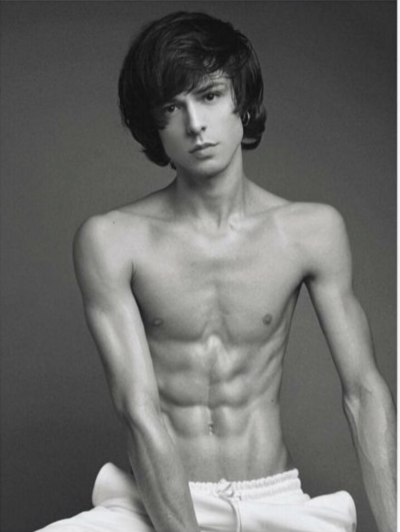
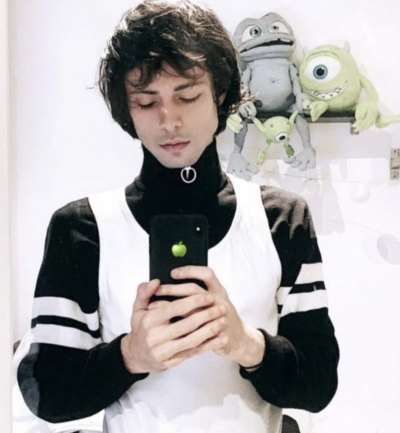
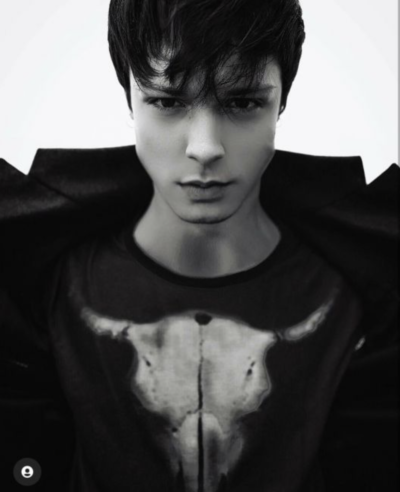
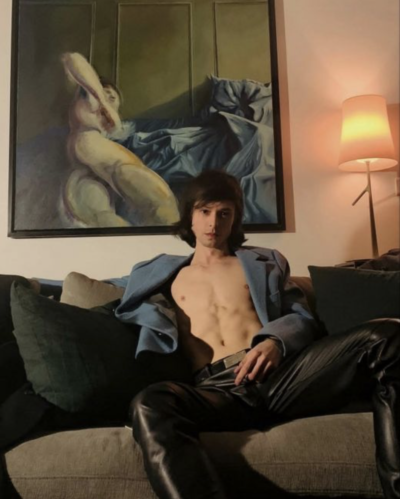

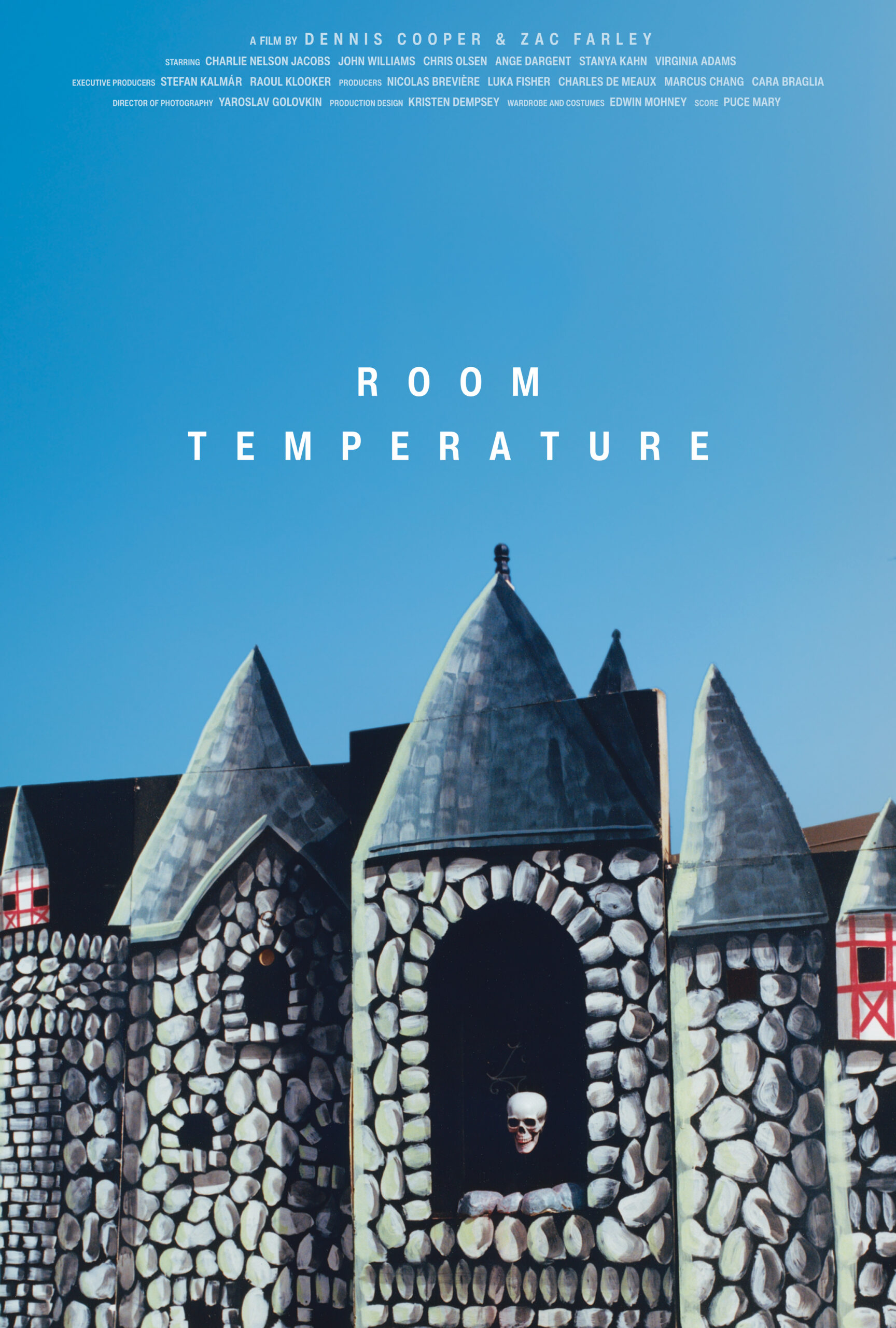



 Now available in North America
Now available in North America 